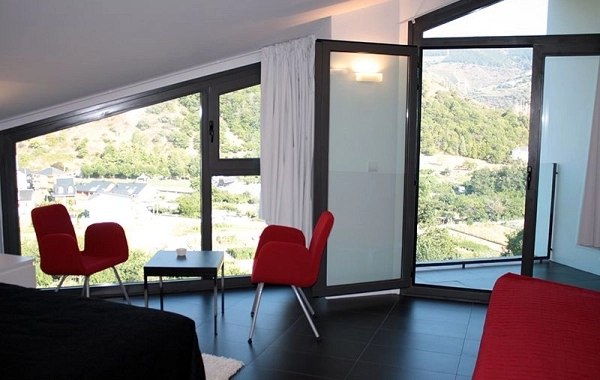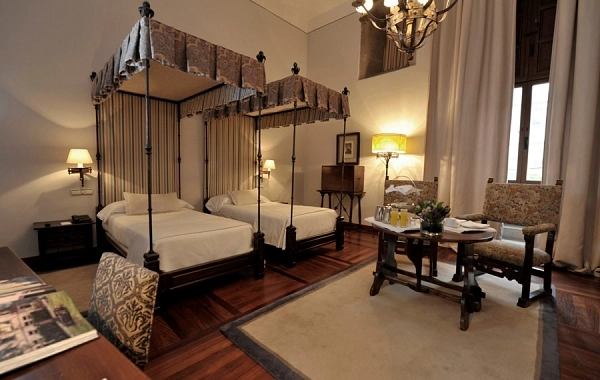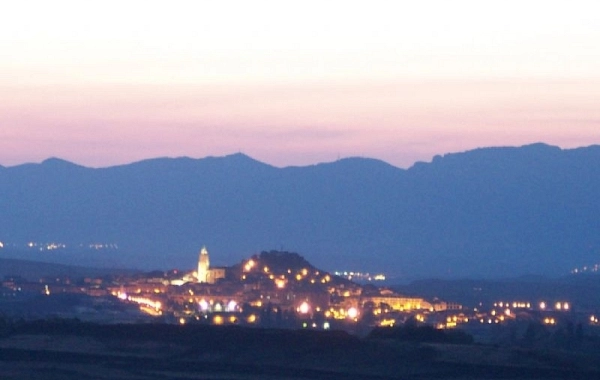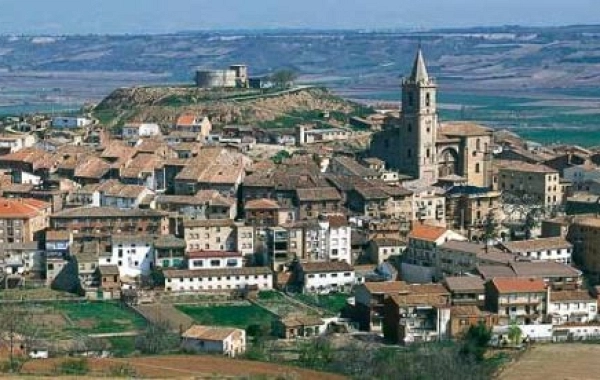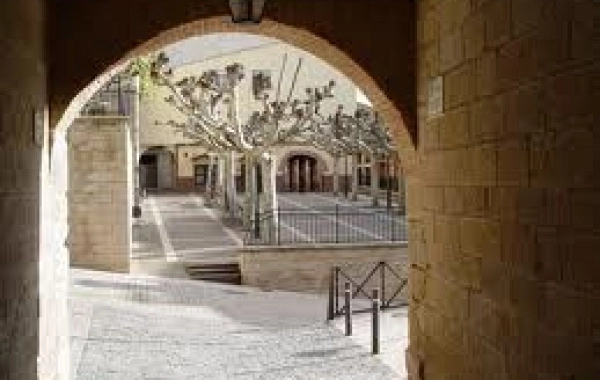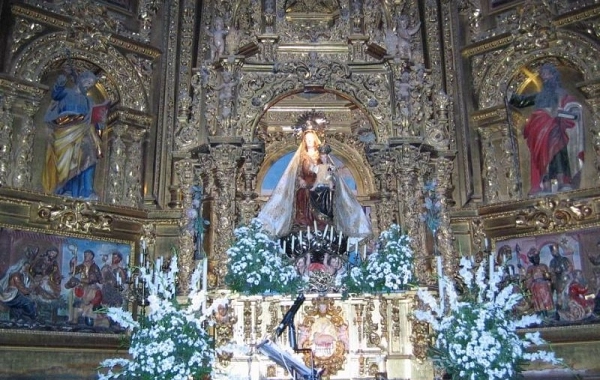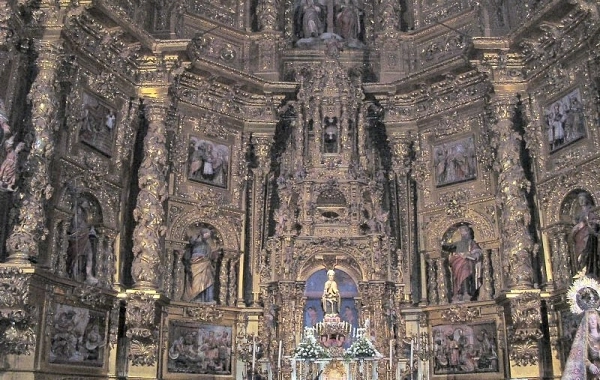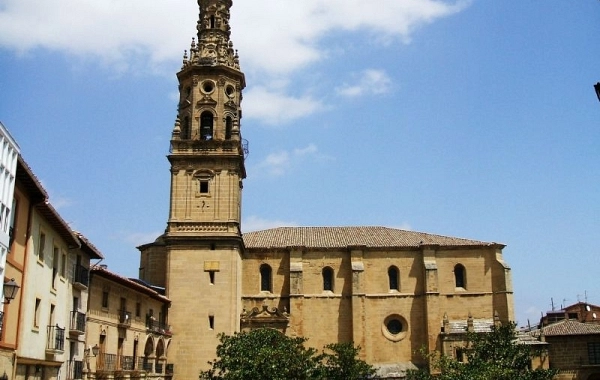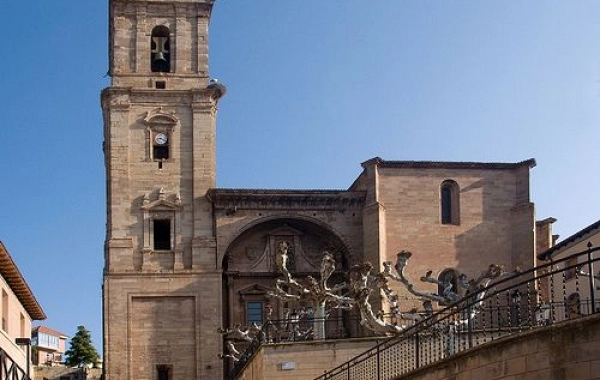CF08 - Viana - Navarrete - 22,3 km
Distance22 Km.Related packages
Leaving Viana: From La Rioja to the Camino de Santiago
The Camino de Santiago leaves behind the lands of Navarre and, coming from Viana and the Hermitage of the Virgin of Cuevas, joins the national road N-111. From here, the pilgrim begins to skirt around Mount Cantabria, a hill that rises 100 meters above the waters of the Ebro River.
At the top of Cantabria, recent archaeological excavations have uncovered remains of a settlement dating back to the 3rd century BC, which continued to be inhabited until the Middle Ages. A point of historical interest along this stage of the Camino de Santiago.
Descent towards Logroño: The Stone Bridge and Santa María de Palacio
The route descends to the walls of the municipal cemetery of Logroño, where pilgrims must cross the Stone Bridge. This construction, dating from 1884, is built on the ancient foundations of another bridge, traditionally attributed to San Juan Ortega, a disciple of Santo Domingo de la Calzada.
After crossing the Ebro, the pilgrim must take the first street on the right, known as Rua Vieja. On this street, the pilgrims will find the pilgrim's hostel at number 32, next to the Church of Santa María de Palacio. This church, in late Romanesque style, is famous for its octagonal pyramid-shaped tower, known as "the Needle," and the sculpture of Santa María de Palacio, an exceptional polychrome Romanesque work.
Discovering Logroño: The Plaza de Santiago and the Church of Santiago
Rua Vieja leads to the square next to the Church of Santiago, a place full of Jacobean references. In this square, there is the Fountain of the Pilgrims, a gigantic mosaic that could be the largest game of goose in the world, and the imposing Baroque image of Santiago Matamoros. The current Church of Santiago, built in the 16th century, replaced an earlier one from the 12th-13th centuries.
Leaving Logroño: The Dirt Path towards La Grajera
After leaving Logroño, the Camino de Santiago continues along a dirt path, lined with trees, leading the pilgrim to the wall of the La Grajera reservoir. Here, pilgrims can enjoy a resting area, ideal for relaxation.
The Castle of Clavijo and the Ruins of the Hospital of San Juan de Acre
15 kilometres from Logroño, the remains of the Castle of Clavijo can be found, an important historical site related to the famous Battle of Clavijo, where, according to legend, Saint James appeared mounted on a white horse.
Further on, the pilgrim will encounter the ruins of the Hospital of San Juan de Acre, whose windows and portal were dismantled and reused in the late 19th century as the door of the local cemetery.
Arrival in Navarrete: The Cross and the Church of the Assumption
The Camino de Santiago continues until reaching Navarrete, where the first street pilgrims encounter is The Cross. In this street, a beautiful Romanesque capital can be admired, depicting the struggle between two knights.
The Church of the Assumption of the Virgin, built in the 16th century, houses one of the best Baroque altarpieces in La Rioja. In addition, Navarrete is known for its craftsmanship, especially pottery, a tradition that remains alive in the town.
Stages
- CF01 - Saint Jean de Pied de Port - Roncesvalles - 21 km
- CF02 - Roncesvalles - Zubiri - 22 km
- CF03 - Zubiri - Pamplona - 20 km
- CF04 - Pamplona - Puente la Reina - 19 km
- CF05 - Puente la Reina - Estella - 19,7 km
- CF06 - Estella - Los Arcos - 20,6 km
- CF07 - Los Arcos - Viana - 18 km
- CF08 - Viana - Navarrete - 22,3 km
- CF09 - Navarrete - Nájera - 16,9 km
- CF10 - Nájera - Santo Domingo de la Calzada - 21 km
- CF11 - Santo Domingo de la Calzada - Belorado - 22,7 km
- CF12 - Belorado - San Juan de Ortega - 24 km
- CF13 - San Juan de Ortega - Burgos - 27,6 km
- CF14 - Burgos - Hornillos del Camino - 18,3 km
- CF15 - Hornillos del Camino - Castrojeriz - 20,40 km
- CF16 - Castrojeriz - Frómista - 24,90 km
- CF17 - Frómista - Carrión de los Condes - 19,2 km
- CF18 - Carrión de los Condes - Lédigos - 23,40 km
- CF19 - Lédigos - Sahagún - 17,10 km
- CF20 - Sahagún - El Burgo Ranero - 17,9 km
- CF21 - El Burgo Ranero - Mansilla de las Mulas - 18,7 km
- CF22 - Mansilla de las Mulas - León - 18,4 km
- CF23 - León - Villadangos del Páramo - 21,8 km
- CF24 - Villadangos del Páramo - Astorga - 26 km
- CF25 - Astorga - Rabanal del Camino - 20,6 km
- CF26 - Rabanal del Camino - Molinaseca - 24,7 km
- CF27 - Molinaseca - Villafranca del Bierzo - 30,5 km
- CF28 - Villafranca del Bierzo - O Cebreiro - 30 km
- CF29 - O Cebreiro - Triacastela - 22,9 km
- CF30 - Triacastela - Sarria - 22 km
- CF31 - Sarria - Portomarín - 22 km
- CF32 - Portomarín - Palas del Rei - 23,9 km
- CF33 - Palas del Rei - Arzúa - 28,6 km
- CF34 - Arzúa - Santiago de Compostela - 38,4 km
- CF35 - O Pedrouzo - Santiago de Compostela - 20 km




